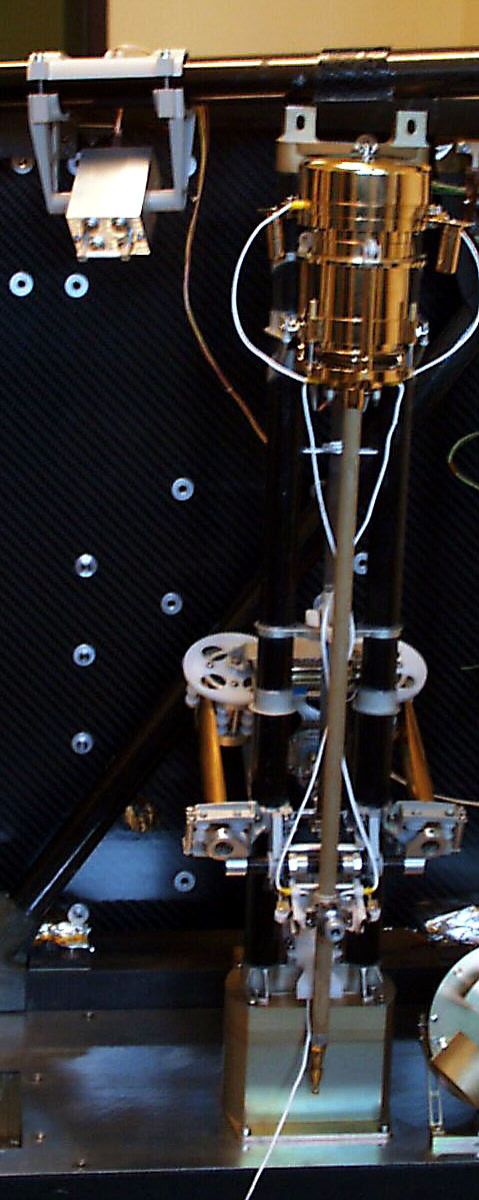
You are here
- Home
- Mission
- Philae lander
- MUPUS
MUPUS

Copyright DLR
MUPUS (Multi Purpose Sensors for Surface and Subsurface Science) consists of a number of temperature sensors attached to a 35 cm long penetrator that was designed to be deployed away from the landing module. The principle was that, as the penetrator was hammered into the ground, the progress per hammering stroke and the temperature of the subsurface would be measured. In combination this would have provided an indication of the properties of the comet’s surface (i.e. how resistant to penetration the surface was) and a profile of the temperature change with depth. The Philae team attempted to deploy MUPUS after the landing, however it is possible that the sensor broke during the analysis
In addition to the sensors on the penetrator, MUPUS also has two heat sensors mounted on the harpoons that did not fire. Finally, an infrared sensor known as the thermal mapper (TM), mounted on the Philae lander itself, could measure heat emitted from the surface of the comet over a small area.
Sources and further information are available at:
Contact us
Any media enquiries should be directed using the links below:
The Open University
Science and Technology Facilities Council
jake.gilmore@stfc.ac.uk
http://www.stfc.ac.uk/mediaroom